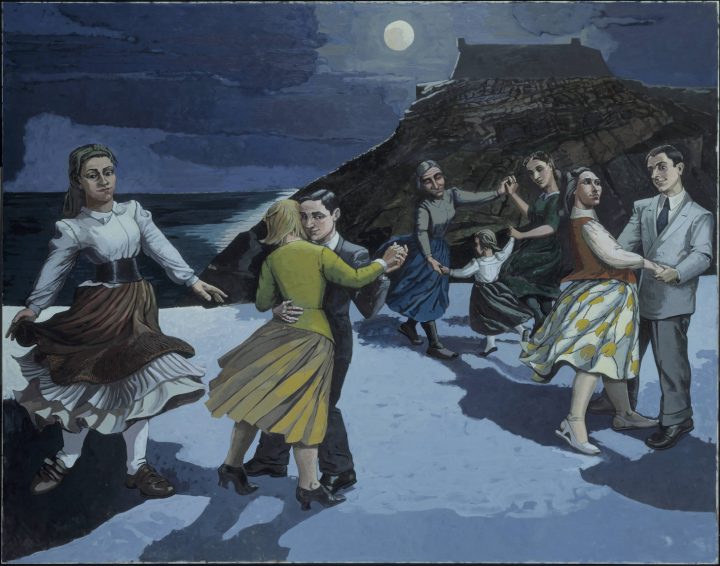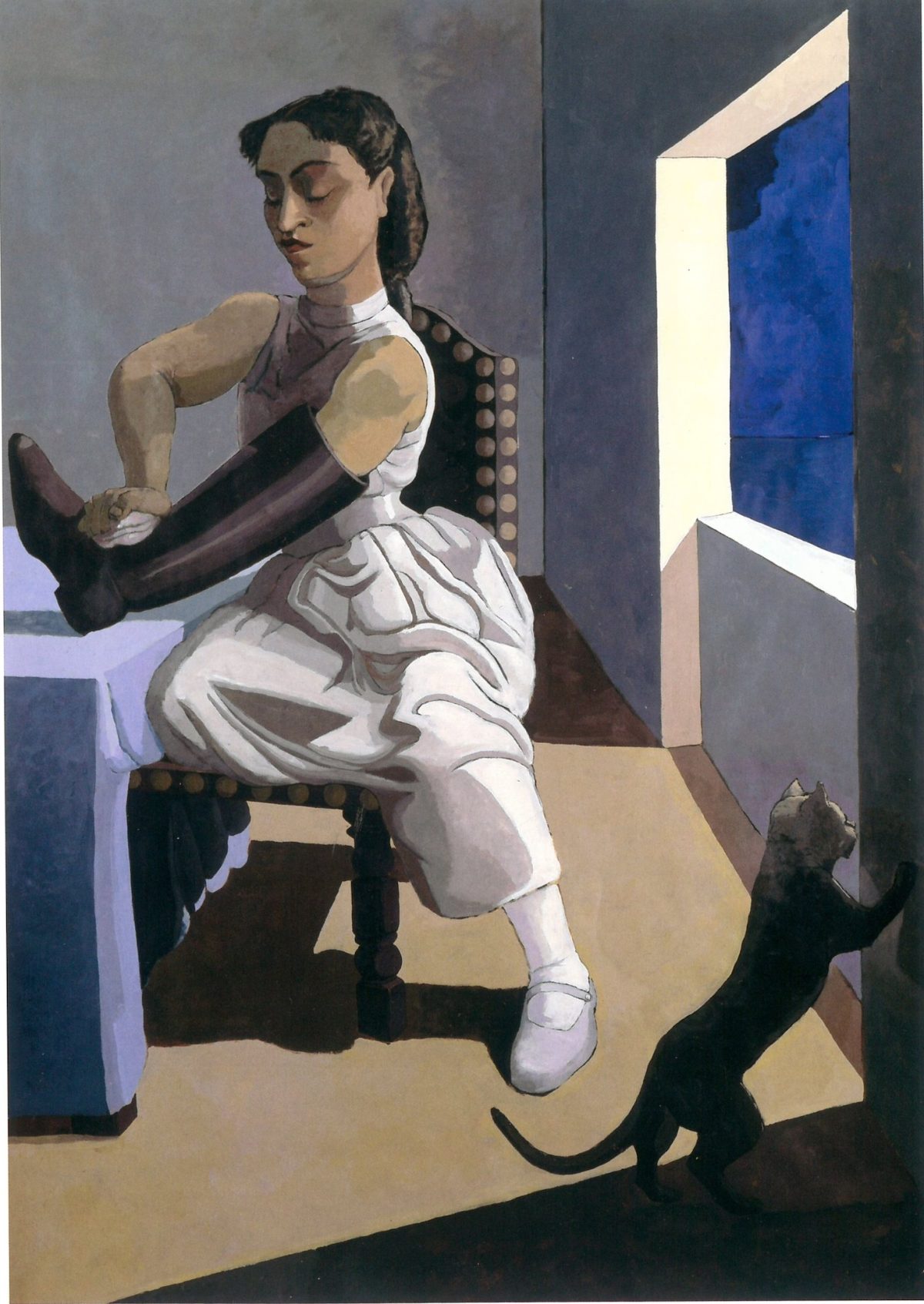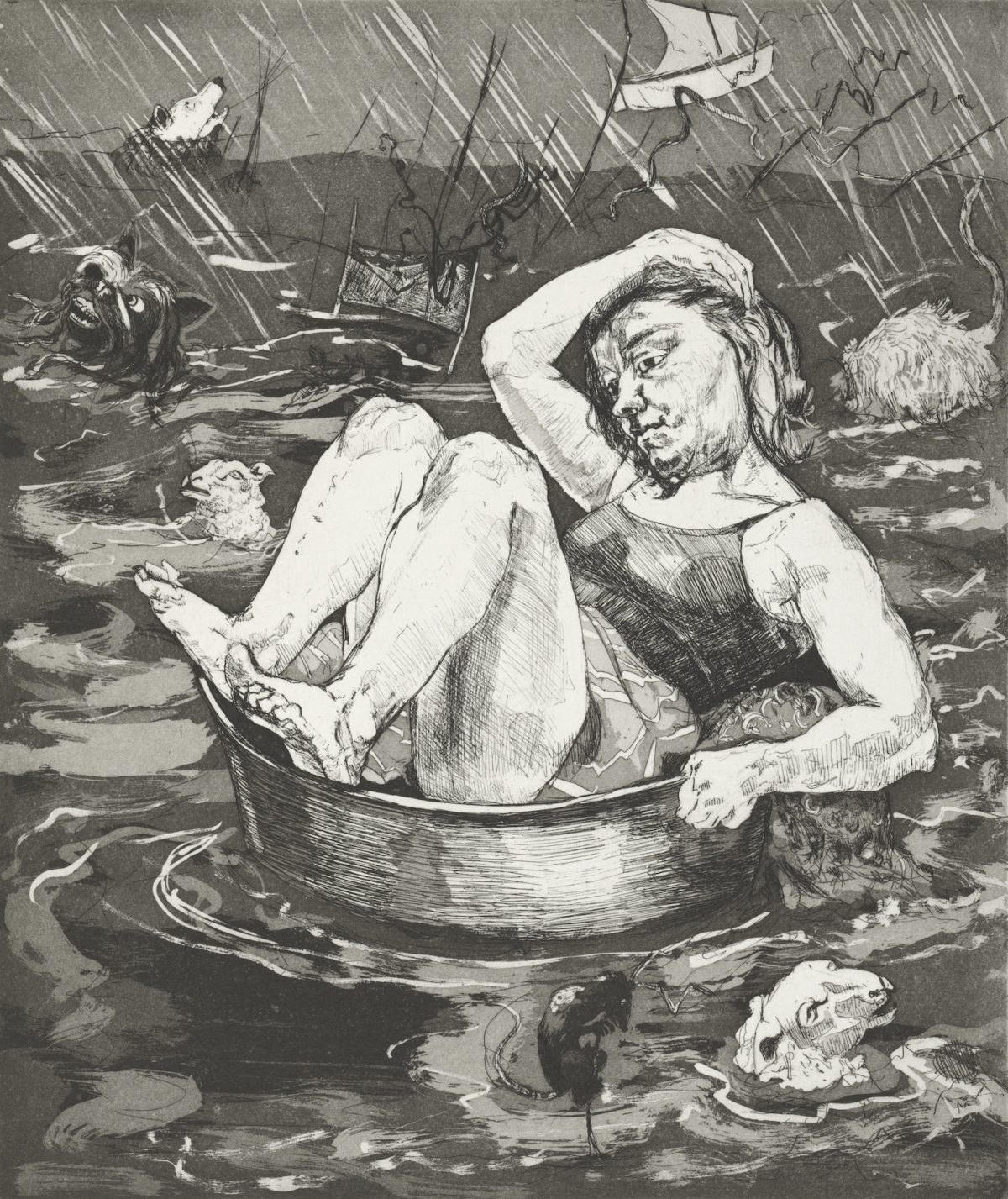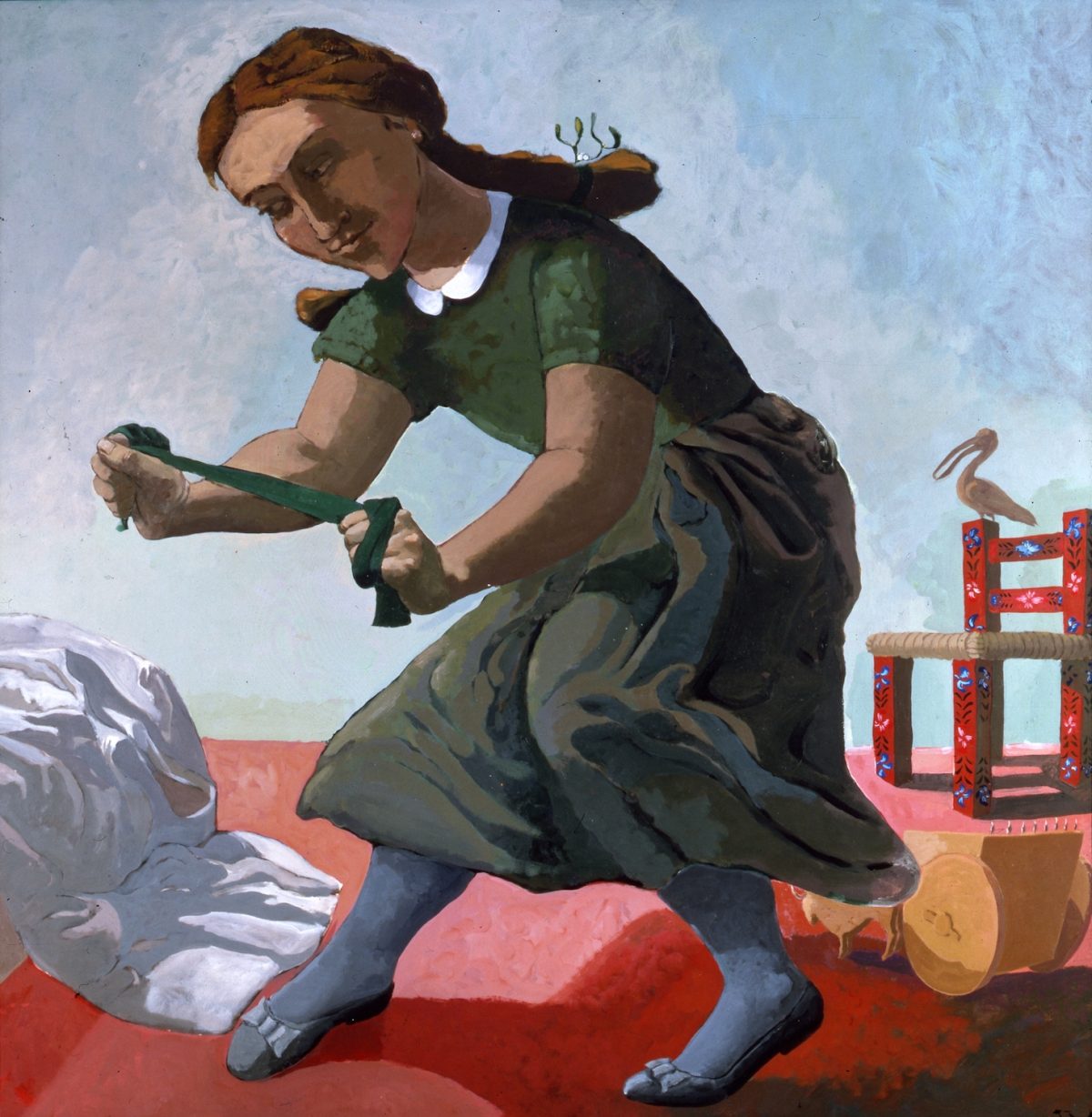
LONDON — What is it about the hardness, and the calculated, if not shrill, vividness of drawing in pastel that seems to suit the art of the figurative painter Paula Rego so well?
She was born in Lisbon in 1934, into a Portugal in the grip of a brutal dictatorship that did not finally end until 1974. By then, she had decamped to London, where she has lived for more than half a century.
That experience of being overshadowed, every day of her young life, by the malign forces of political oppression, has shaped everything she has ever done as an artist, as this retrospective at Tate Britain makes abundantly clear.
Pastel has been her weapon of choice for at least a quarter of a century. It defines the content of her paintings with an almost brutish stridency. Held in the hand, you can apply a fat stick of it — in all its messy finger-stainingness — with such force: “The stick is fiercer, much more aggressive …” she once said.

And when she uses it, it seems entirely at one with her enterprise as an artist. The work feels, almost always, like an extremely affirmative species of fight-back or push-back against forces that threaten to crush her (as woman, artist, or merely representative of the human race), whether they be brazen military might or the powers of unreason.
In the first room, the wizened anguish of an early (1954–55) portrait of her father, a passionate republican who did not live long enough to experience the joy of the overthrow of Salazar, sets a somber tone. The works of the 1960s and 1970s show her experimenting with collage, often on a huge scale. Disparate elements float together: fragments from Portuguese folktales drift into place beside a snatch of an illustration from Doré’s version of Dante’s Divine Comedy — a book her father would read to her when she was a child — or a fairytale by Arthur Rackham. Everything is wildly on the mix and match, the ghoulish with the diabolical.

Her colors increase in strength and boldness as she matures as an artist, and her figures become ever more emphatically outlined. Wild monkey-like creatures and fiercely rebellious girls share the same pictorial space. Her paintings, often multi-figure, are increasingly ferocious, raucous, wild, untrammeled. There are many scenes set in the nursery, but this is not a place where a mere child could ever find a peaceful haven. On the contrary, it is a site of mayhem, danger, violence — and even of murderous impulses.
Rego’s women are always independent spirits, and they are often raging. Over-long shadows are thrown down like a challenge to the unwary. Mysterious symbolism adds to the sense that some dark, unspoken narrative undertow is at work here. Why is that black cat rearing up? What is the meaning of that pelican sitting pretty on the back of a chair? Who let that marauding wild boar into the room? Why does that rake on the carpet look like a dangerous fanged weapon? The combativeness seems to be spreading in all directions, like a stain.
Her take on the female form is an important contribution to the long battle to normalize the representation of the feminine, to drag it down from the plinth of artifice. Her women are never idealized. They are never seen self-preening. They can be gauche and lumpish and fierce. They sprawl or fling themselves around inelegantly. You could argue that Rego is at war with the artificial constraints of the essential desirability of the very idea of elegance.

Some of her best works concentrate on the portrayal of a single woman, in all her pain, all her dis-ease, as Albert Camus once wrote. But with pain also comes the strength needed to endure it. There is much to endure, much to fight back against. A woman sprawls on her back, wild-eyed, interrogating the aftermath of love. Another woman wrestles with a girdle, shifting it about around the middle of her body. It is a distressing sight, to see the discomfort involved in creating a figure whose contours are designed to please others. Please whom though? Who is demanding this of her? The question hangs in the air, as does the sullenness of her facial expression. This is a representation of oppression in all but name.
Rego’s work has often swum through the landscapes of folklore, nursery rhyme, and fairytale and, once again, she disabuses us of the lazy assumption that these are sites of childlike innocence, happiness, and laughter-filled insouciance. The truth is that she has never gotten rid of the child that she once was in Portugal. Some of the grimmest works in this show are a series of prints of favorite nursery rhymes, from “Three Blind Mice” to “Little Miss Muffet.” They have all the tension and all the darkness of late Goya. There is nothing but grayness, blackness, whiteness, and all points in between. The way that the mice dance in a ring, lifting their legs so high, so pertly, looks positively creepy and flesh-chilling. The blind eye of the mouse who happens to be looking in our direction is a near-perfect almond of blank and unseeing whiteness. What exactly is this multi-tentacled creature, which seems to be stalking Little Miss Muffet, preparing itself to have her firmly within its grasp? Has there ever been a (baa baa) black sheep quite so large and overbearing as this one? A single quick rip opens up the dark underbelly of all that jingly childish storytelling.

Her paintings also press props of her own making into service — often large, lumpish, grotesque, and mysterious — in combination with the human figure. These paintings seem to suggest how we can be haunted by our own lives — unwelcome memories, repressed fears, the loomings of bad conscience, the road untaken …
Everything feels unsettled about Rego. But it is magnificent too, all this ferocity, this truth-telling, this descent into grotesquerie, this willingness to tear off and pare back, expose hypocrisy, howl about injustice. It had to be like this.
And that pastel in the hand is her weapon of choice.
Paula Rego continues at Tate Britain (Millbank, London, England) through October 24.
0 Commentaires